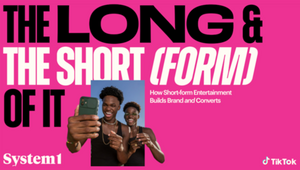
Are Ads Becoming too Far Left (Brain)?

New research by Orlando Wood of System1, published in the new book Lemon (by the IPA), argues that the 21st century has seen a shift in society towards culture that appeals to audiences’ left brain – and shows how this shift has affected the advertising industry for the worse!
Wood demonstrates that features of ads can be identified and categorised to establish whether an ad appeals more to the left- or right-brain (the left brain’s way of seeing the world being more abstract and analytic, and the right brain’s being more holistic and human).
Wood finds a massive imbalance in modern advertising in favour of left-brain features. The average number of left-brain features across all ads in the UK nowadays is 3.9 compared to just 2.3 right-brain elements. UK YouTube ads reveal an even wider gap, with 4.1 left-brain features compared to 1.7 right-brain ones.
This matters because the loss of right-brain elements in ads deeply damages the ability that advertising has to deliver long-term market share growth. Wood shows that right brain ads are more effective long term. Using a random sample of 100 UK and 100 US TV ads from System1’s comprehensive Ad Ratings database, Wood find out how left- and right-brain features influence ad effectiveness. System1 Ad Ratings translates raw emotional response to an ad into a 1-5 Star Rating that is predictive of market share growth.
The findings in Lemon clearly show that the more an ad is built to appeal to the right brain, the more effective it will be. The fewer right-brain features an ad uses, the less likely it is to achieve a high star rating. More than 60% of ads using the fewest right-brained features achieved just 1-Star and consequently have no chance of long-term brand growth.
Ads with a high number of right-brain features are more effective, with 5% of them achieving a 5 star rating, compared to 0% for those that have fewest right brain features.

Specific features in advertising appeal to one or the other hemisphere. For example, a highly rhythmic soundtrack is a left-brain feature while a melodic soundtrack appeals to the right-brain. And because the right brain values ‘between-ness’ – the relationships between people and things – ads with dialogue and implicit communication like glances between characters score well with the right brain.
Orlando Wood, Lemon author, invites advertisers to “free their right brain and bring back creativity to advertising”. In the book he highlights that “advertising isn’t only an artform, it has a commercial purpose. Being aware of the divide between left- and right-brain elements is a first step towards a better and more effective way of producing ads. The advertising brain has turned sour losing its humanity. We have to make things right again because the future of advertising depends upon it”.












